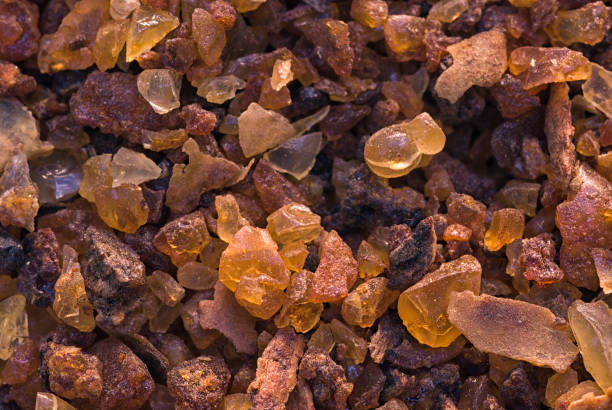Myrrh

Myrrh to Myrrh
Munir Nabi Khan
Director, Dawakhana Hakim Ajmal Khan (Pvt) Ltd
“ And He (Allah) is the all knower of every thing”
(Al-Quran 2:29)
In 1974, I was a student at Lancaster University in the UK. In Western countries students were associated with the following statement, “Oh! Hand to mouth person” and that I was. It was a Sunday morning and unexpectedly a sunny one in Lancaster, while sitting alone in my room I was thinking about where to go to kill my time. Suddenly, it occurred to me, why not visit a Church and see how Christians celebrate their religious day and what other activities they carry out on Sunday. I left my flat at 10 am and by the time I reached the Church, the Sunday congregational gathering was over, people were leaving and the father was bidding farewell to all attendants of the Sunday prayers at the door of the Church. Availing of this opportunity, I requested the father if I could take a look inside. The Father also suggested that I should have a look at the library to see if I could find something that would be of interest to me.
The Church was a small one and it took me hardly five minutes to look at the architecture and interior. Finally, I reached a place of my interest; a small section where they had some books stored. An interesting book “Myrrh to Myrrh” caught my attention. I was familiar with the word ‘Myrrh’ as this gum was used in our Ajmal Dawakhana as one of the ingredients in the compound formulation. I found it rather strange to come across such a book and wondered, “What a book based on gum has anything to do with the books collection of a Church?” Flipping through the pages of the book revealed that the context was about the birth and death (Crucifixion) of Jesus (Hazrat Essa). It was one of the gifts from a “wise man” offered to Jesus (Gospel of Matthew 2:11) and was also given to Jesus before his crucifixion (Gospel of Mark 15:23). Nicodemus brought a mixture of myrrh and aloes with the linen cloths for wrapping the body of Jesus (Gospel of John 19:39). Myrrh a gum worth looking at it” was the first thing` that came to my mind.
The Aramaic word murr means bitter and in Greek it is myrrh. Arabic word mur/murr is basically of Aramaic origin. In Anglo-Saxon it is myrrh. In Hebrew Bible it is written as mor derived from Babylonian Talmudic marro, meaning bitterness. In Christian Bible, Greek name myrrah is mentioned for this gum. Latin name of this gum is Commiphore myrrha of family Burrseraceae. In Urdu and Persain it is Murr.
Myrrah is mentioned twice in the Torah (Genesis 37:25, 43:11), however, scholars are not yet sure it is the same plant under discussion.
In Christian Bible Myrrah in mentioned eight times. (Ex.30:23, PS.45:8, Prov. 7:17, Songs. 3:6, Esth. 2:12, Matt.2:11, John19:39, Mark15:23, Matt 27:34).
A formulation of a Holy ointment is mentioned in the Old testament.” Oh Moses Take the finest spices: of liquid myrrh five hundred shekels (500 shekels is equal to 12 pounds by weight), and of sweet-smelling cinnamon half as much”. (Exodus 30:23).
A Gum tree is mentioned once in the Quran, but that is Gum Acacia (Gond Kiker). Some scholars believe it was a banna tree, regardless of the nature of the tree, Acacia is thought to be the tree of Bai’at Rizwan (Pledge of Allegiance) Al- Quran 48:18.
Myrrh originated from the Arabian Peninsula, where the gum resins were first collected. Its trade route reached Jerusalem and Egypt from modern Oman.
Since ancient times, myrrh has been valued for its medicinal qualities and for the ancient Egyptians as the principal ingredient used in the embalming of mummies and the value of this gum was same as gold (w/w). Emperor Nero supposedly burned a year's worth of myrrh at the funeral of his wife, Poppaea.
Herodotus, (5 hundred BC), wrote "Arabia is the only country which produces myrrh, cassia, and cinnamon." Diodorus wrote in the first century BC that "all of Arabia exudes a most delicate fragrance; even the seamen passing by Arabia can smell the strong fragrance that gives health and vigor. Nilocita, in his book, wrote medicinal properties of myrr. Dioscorides was the first to write Pharmacopeia (Book of herbs) and described the medicinal value of this gum in detail. All Muslim scholars (herbalists) gave importance to this gum in their books, especially, Abu-Ali-Ibn-Sina (Avicenna) and Abu-Abdulla-Ibn-Baytar of Al-Andalus. This gum is still used to flavor the liqueur known as “Fernet”. Some 20 years ago this gum was a common ingredient in herbal medicines of the Sub-continent it is now replaced by Acaccia gum (gond Kiker), mainly due to its cost.
Myrrh improves digestion, diarrhea, and immunity. It treats coughs, halitosis, gum disease, wounds, Candida, overactive thyroid, and some throat problems. Herbal medicine practitioners worldwide have now accepted that myrrh is one of the most effective medicines in the world to cure aching throats, (canker sores) and gingivitis. Its oil serves as an excellent stimulant for the body. A high dosage of Myrrh oil can be toxic to health. Therefore, pregnant women should refrain from its use.
It is the 21st century and the year is 2011, the definition of a student “Oh! hand to mouth person” is still a valid saying, not just in Europe but all over the world. Being rich should not always be associated with a person having the strong financial background, but the one who has sound knowledge of different subjects. Stick like a “gum” with students and utilize their knowledge for the benefit of human beings. Knowledge is a blessing and is mentioned several times in The Torah and The Bible. The much proof that Islam emphasis’s on seeking knowledge is the very first word of first Ayaah (Verse) revealed was Iqra meaning READ.


